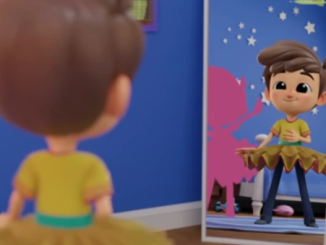
Standardized testing is a controversial practice in the American public school system. Critics contend that standardized tests don’t take creativity or complex problem-solving skills into account, instead focusing solely on rote memorization. They also argue that the tests don’t serve as good predictors of future success and could be unfair to certain disadvantaged groups.
Whether those criticisms have any validity or not, they can lend some insight on the basic knowledge base of future U.S. citizens at a critical point in their education.
The U.S. history and civics tests administered by the National Assessment of Education Progress (NAEP) last year provided one such insight: a large portion of eighth graders are woefully uninformed about the nation’s history and the workings of its government.
The average score on the eighth grade U.S. history test sunk to its lowest level since the test began in 1994. A mere 13% of students scored proficient on the test, while only 1% scored advanced. Meanwhile, 40% (4 out of 10!) of students who took the test scored below basic — up from 34% in 2018 and 29% in 2014. Overall, the average score on the test has decreased 9 points since its apex in 2014. Additionally, lower-performing students experienced a larger drop, between 6 and 7 points, compared to higher-performing students, between 3 and 5 points, from 2018 to 2022.
Average scores on particular themes in American history showed an even more drastic drop. The average score decreased 7 points on questions regarding America’s role in the world, 9 points on the themes of democracy and technology, and a whopping 11 points on questions pertaining to American culture.
The U.S. civics test revealed similarly disappointing results, with the test seeing its first ever drop in scores since its inception in 1998. The average score dropped 4 points from 2018 to 2022. Twenty percent of students scored proficient on the 2022 iteration of the test, and 2% scored advanced — double the percentage from the history exam. But 31% scored below basic, up from 27% in 2018.
Higher performing students saw basically no change in scores from 2018 to 2022 on the civics test, but students in the 50th percentile and lower saw a decrease of 3 points.
The news that scores have remained basically stagnant over the last several decades is punctuated by the fact that the United States maintains one of the highest rates of education spending per pupil in the world.
The significant learning loss from the COVID-19 pandemic almost certainly has a part to play in 2022’s dismal numbers — scores on other subjects like math and reading have also decreased. But the drop in scores on the U.S. history test had begun way before lockdowns stunted the nation’s education system. Another partial explanation for why students’ knowledge of America’s past may come from what they are being taught in their history courses.
At around the same time as history scores began to decline, critical race theory and radical gender ideology began to creep into school curricula. While CRT has seemingly infected every school subject, including seemingly non-political subjects like math and science, the push has been mostly concerned with reshaping students’ perceptions of American history.
One of the more infamous examples of CRT infiltrating public schools was the adoption of NYT journalist Nikole Hannah-Jones’ “1619 Project” in several school districts across the country. The “1619 Project,” originally a series of articles published in The New York Times in 2019, posited that anti-black racism has impacted every facet of American society and that American history should be viewed through the lens of racial oppression of black people by white people. The project also asserts that the true beginning point of American history is 1619, when the first African slaves were brought to Jamestown, rather than the more traditional date of 1607, when Jamestown was established.
Though the project won a Pulitzer Prize in 2020 and scored Hannah-Jones numerous accolades and lucrative speaking engagements, it was roundly criticized by prominent historians for its numerous inaccuracies, including the assertion that the United States was founded explicitly to protect slavery and that African Americans campaigned for civil rights alone. Pulitzer Prize-winning historian James McPherson and Brown University Professor Gordon Wood were some of the most vocal critics of the project’s interpretation of American history. In fact, they joined with three other respected historians to send a letter to the NYT lambasting the project’s mistakes and mischaracterizations in December 2019.
“We are dismayed at some of the factual errors in the project and the closed process behind it. These errors, which concern major events, cannot be described as interpretation or ‘framing.’ They are matters of verifiable fact, which are the foundation of honest scholarship and honest journalism,” the letter said.
Soon after it was released, the Pulitzer Center reported in May 2020 that more than 3,500 classrooms had used materials related to the “1619 Project.” And that number has only grown — Fox News reported in April 2022 that over 4,000 educators were using the materials in their classrooms.
City Journal released a survey in October 2022 that asked recent high school graduates, aged 18 to 20, whether they had been actively taught six concepts integral to CRT. Out of 1,505 respondents from across the country, 36% said they had been taught in class that “America is a systemically racist country,” 41% said they had been taught that “In America, white people have white privilege,” and 30% said that they had been taught that “America is a patriarchal society.”
Several states, including Georgia and Florida, have already taken action to ban CRT in classrooms, but some activists have already found ways of circumventing state regulations.
It should be noted that the sample questions provided in the NAEP report don’t appear to be concerned with race and gender beyond the facts. A question rated as basic by the NAEP asked why Americans supported the 18th Amendment (Prohibition), and a question rated proficient asked what European explorers were looking for when they sailed the coasts and rivers of North America in the 17th century (a water route to Asia). None of the answer choices for either question specifically mentioned race or race relations.
The sample question rated advanced did touch on race relations in the U.S. — it asked students to identify two ideas from the Constitution and/or the Declaration of Independence that Martin Luther King Jr. may have been referring to in a specific part of his “I Have A Dream” speech from 1963. Unlike the previous questions, it was not multiple choice, and students would be required to write their own answers in short sentences. According to NAEP, only 6% of students who took the test gave a complete answer to the question.
With reportedly thousands of teachers more interested in peddling thoroughly debunked pseudo-history to young students rather than teaching the facts, it may not be a surprise that their knowledge of American history is lacking. With more and more instruction time going toward pushing an ideological agenda, there is necessarily less time to cover the facts tested on the NAEP’s exam. If the CRT push continues, a whole generation of future citizens could finish their education with an incomplete, and oftentimes warped, view of their own nation’s history.
* Article From: The Daily Wire
(*) www.WhitePrideHomeSchool.com


